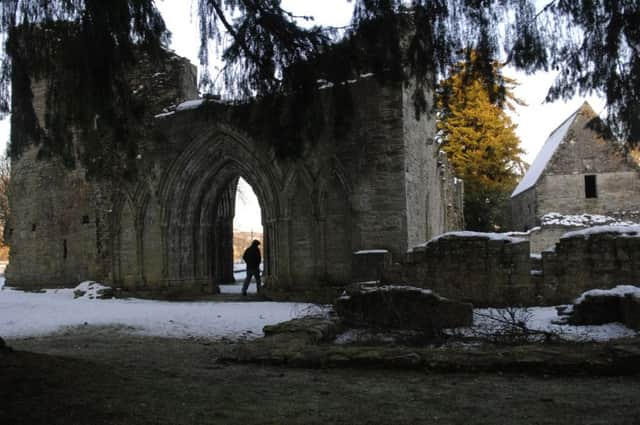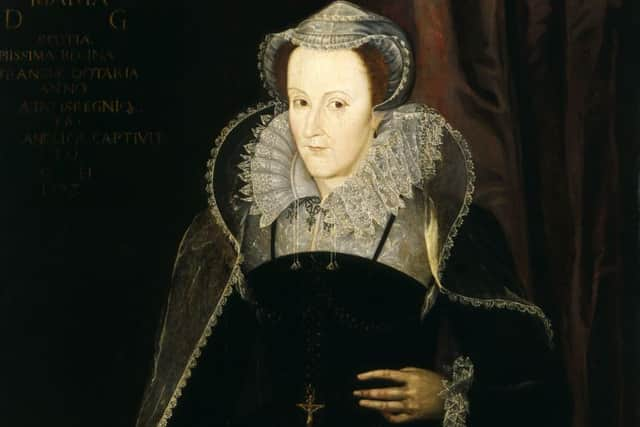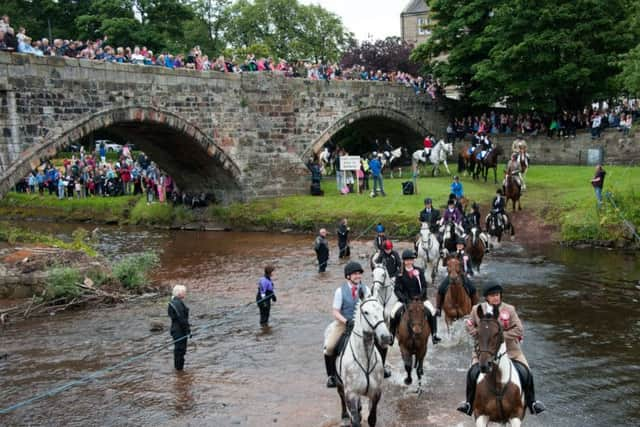The story of England's '˜Rough Wooing' of Scotland


For several years, large parts of Scotland had been occupied by English forces.
The trail of destruction was considerable. Edinburgh, with the exception of the castle, was almost totally destroyed in May 1544. The prosperous towns of Musselburgh and Dunbar were similarly set ablaze by troops sent north by the aging Henry VIII.
Advertisement
Hide AdAdvertisement
Hide AdYet despite winning a decisive battle against the Scots at Pinkie Cleugh in 1547, and occupying several castles for prolonged periods, the English crown achieved little during the campaign other than spending considerable amounts of money and causing misery for the local populace.


Its principal aim - to ensure the marriage of Mary, Queen of Scots to Henry’s son Edward - was a total failure.
Background
James V was the last great catholic king of Scots. He inherited the crown aged 17 months when his father, James IV, was killed at the battle of Flodden in 1513.
He dismissed his regents and assumed power in 1528. By then, the Protestant Reformation was already underway in continental Europe.


Scotland was unaffected by this upheaval until 1533 when its closest neighbour and oldest rival, the kingdom of England, broke with Rome.
While Henry VIII shut down monasteries and seized church property, the old religion continued as normal north of the border.
Initial relations between James and Henry were cordial. Henry’s sister, Margaret, was James’ mother. But relations soured as the 1530s wore on, with the two monarchs increasingly at loggerheads over religion. The Scots king’s refusal to meet his uncle in person at York ended any relationship between the two men.
Advertisement
Hide AdAdvertisement
Hide AdWar broke out between the two countries in 1542. An initial Scots victory in August at Haddon Rig was crushingly reversed in November on the border at Solway Moss. Although there were few soldiers killed, more than 1200 of James’ army were taken prisoner.


The king, already ill, died two weeks later at Falkland Palace. The crown passed to his baby daughter Mary, born just six days before.
James Hamilton, Earl of Arran, was appointed regent.
It appeared a personal union between Scotland and England through the marriage of Mary and Edward was now inevitable.
Outbreak of war


Henry was determined to impose his will on the weakened Scottish kingdom and permanently end its alliance with catholic France.
A treaty signed at Greenwich in July 1543 agreed the infant Mary would marry Edward, Henry’s only son.
Scotland’s nobility was divided between a pro-English protestant faction and catholics loyal to Mary of Guise, James’ widow.
Regent Arran was initially a protestant, but dramatically switched sides after a meeting with Cardinal David Beaton. He agreed to a rival plan to send the Scots queen to France to marry the dauphin, Francis.
Advertisement
Hide AdAdvertisement
Hide AdThe Scottish Parliament renounced the Treaty of Greenwich in December 1543.
A furious Henry declared war that same month. The Scots could scarcely have predicted the savagery that would follow.
Invasion of Scotland
An English army, under the command of the Earl of Hertford, attacked Edinburgh on 3 May, 1544.
Contemporary accounts suggest every building in the capital, including Holyrood Abbey and the palace, was burnt. Only the castle held out against the invaders.
English ships were filled with looted goods at Leith and sailed south. The English army retreated over land, burning villages as it went.
Meanwhile, pro-English agents were instructed to spread the word that the invasion was solely the fault of Cardinal Beaton, who was accused of leading Arran astray. The aim was to ferment anti-catholic feeling and bolster the protestant faction.
The Scots gained some revenge the following year at the battle of Ancrum Moor. An army led by Arran routed an English force, which had been marauding in the Borders.
An uneasy truce held for 18 months.
Battle of Pinkie Cleugh
Advertisement
Hide AdAdvertisement
Hide AdHenry VIII died in January 1547 and the teenage Edward VI ascended to the English throne.
Edward’s uncle, the Duke of Somerset, became regent. He was keen to resume the campaign in Scotland and break its association with France, as well as capture the young Queen Mary.
Arran was pre-warned about the English military build-up and told to expect invasion. Preparations to defend Edinburgh began.
Somerset’s army, numbering around 17,000, could call upon the latest technology from across Europe, including muskets and modern artillery. His troops were further strengthened by battle-hardened Italian and German mercenaries.
The Scots force, although numbering around 30,000, relied on much the same tactics used 30 years before at Flodden.
The two sides met by the River Esk near Musselburgh on 10 September 1547, a day that would become known in Scotland as Black Saturday.
The battle was a comprehensive victory for Somerset. A combination of superior weaponry, position and discipline made the difference.
Scots casualties were estimated at 6,000-15,000.
Aftermath
Advertisement
Hide AdAdvertisement
Hide AdDespite such a resounding defeat, the Scottish nobility, still led by Arran, refused to come to terms.
Queen Mary, now aged four, was safely hidden at the island priory on Inchmahome while preparations were made for her escape to France.
Somerset garrisoned troops across the east of Scotland and made his headquarters at Haddington, but could not break the political deadlock.
The Scots hardened their attitudes and refused to negotiate.
As time passed, with no resolution in sight, the financial cost of the occupation became increasingly hard to justify.
Meanwhile, Mary of Guise appealed for help from France and troops eventually arrived to fortify Leith and maintain resistance.
The young queen was finally smuggled out of Scotland in August 1548 to France.
Peace
Advertisement
Hide AdAdvertisement
Hide AdWith Mary safely out of Somerset’s reach, and increased help from French troops, Arran’s position was secure. The English abandoned Haddington in September 1549.
A peace treaty between France and England in March 1550 effectively ended the conflict. A formal peace was agreed with Scotland the following year.
What’s in a name?
The conflict was once known in Scotland as the Eight or Nine Year’s War.
The idea of the war as a ‘wooing’ was popularised by Sir Walter Scott. By the mid-19th century the term had began to appear in history books.
The phrase ‘Rough Wooing’ is thought to derive from a remark attributed to George Gordon, Earl of Huntly by Patrick Abercromby. “We liked not the manner of the wooing, and we could not stoop to being bullied into love.”
Modern historians have noted the inappropriateness of such a jocular name to describe such a savage war.